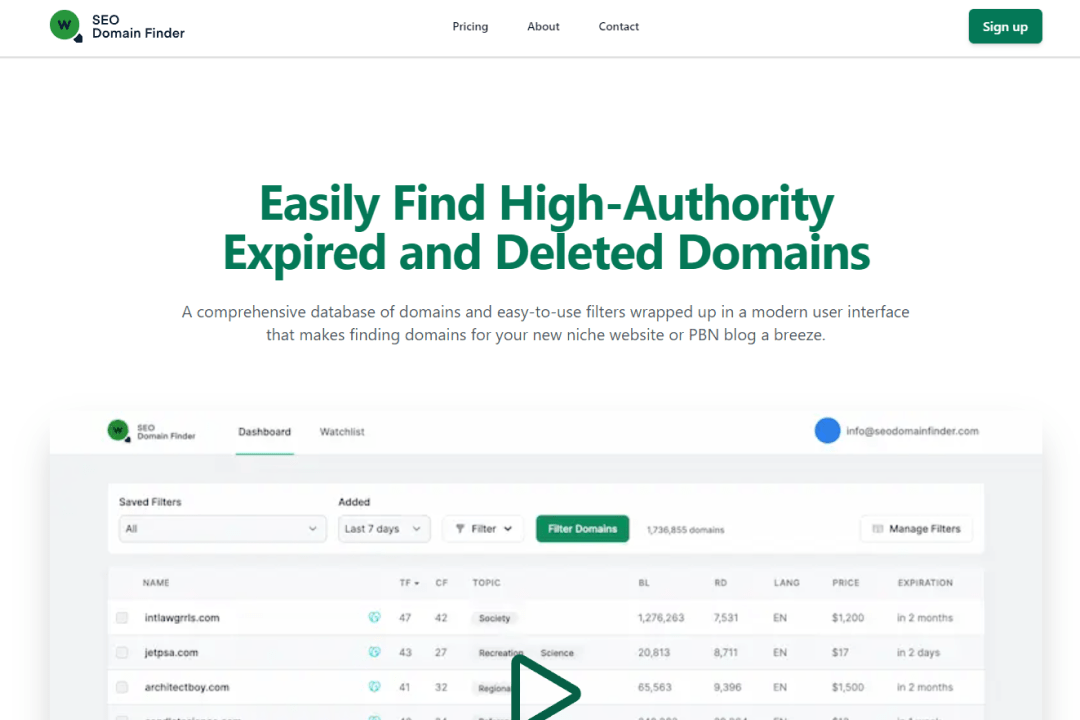
What Are “Trust Flow” and “Citation Flow”?
Do you know what Trust flow and Citation flow are? They are two metrics that measure the trustworthiness and quality of a website.
In this article, we’ll explain the difference between the two and how they interact.
You’ll also learn how to measure these metrics to improve your website’s performance.
So, if you’re ready to understand trust flow and citation flow better, let’s dive in!
Key Takeaways
- Trust Flow (TF) and Citation Flow (CF) are metrics used to determine the quality and link authority of a website.
- Trust Flow measures the trustworthiness of a website, while Citation Flow looks at the quantity of links pointing to the website.
- The typical CF:TF ratio hovers around 2:1, or 50%.
Trust Flow and Citation Flow Explained
Trust Flow and Citation Flow are metrics used to determine the quality of a website, as well as its link authority. They’re derived from Majestic’s Comparing Algorithms, which are used to measure the reputation of a website.
Trust Flow measures the quality of incoming links, while Citation Flow measures the number of links. Overall, these two metrics are used together to assess the quality and link authority of a website.
Keep in mind that CF and TF are not part of Google’s algorithm, meaning they do not affect how websites are ranked in search results.
What is Trust Flow
Trust Flow is a metric designed to measure how trustworthy a website is. It’s calculated by evaluating the quality of the links that point to a site. According to Majestic, Trust Flow relies on a collection of trusted seed sites, which have been reviewed manually. Websites closely connected to these trusted seed sites receive higher scores, while those with questionable links get lower scores.
In simpler terms, if you get links from reputable websites, your trust score goes up. But if you have links from untrustworthy sites, it can bring your score down. This metric is useful for evaluating not only how well your own website is doing but also how your competitors are performing.
When used alongside other SEO metrics, it provides a well-rounded view of your SEO performance.
What Is a Good Trust Flow?
Understanding what a good trust flow is can help you measure the quality of your website. Trust flow is measured on a 0-100 scale, where 0 is the lowest and 100 is the highest.
If you’re curious about the Trust Flow of your website and whether it’s considered good, you should check which of the following three categories it falls into:
- A score of 50 or higher signifies a high level of Trust. If your site falls within this range, it is considered as trustworthy as major websites like the Washington Post, CNN, YouTube, Yahoo, or TED Talks.
- A score between 10 and 50 indicates a moderate level of Trust. Well-known sites in this range include Reuters, Macy’s, and MSN.
- A score of 10 or less reflects a very low level of Trust. This range may include brand-new websites or those using questionable SEO strategies.
High trust flow means that a site has a good reputation and is trusted by search engines. Low trust flow can indicate that a website is spammy or of low quality and should be avoided.
How Do You Increase Your Trust Flow?
Keeping an eye on your website’s Trust Flow helps you see how trustworthy your site appears to others, especially in SEO.
There are a few methods you can use to boost your Trust Flow:
- Check Your Competitors: Look at what links your competitors have. It helps you know what topics are important for your content. Trust Flow can also show where your site can do better than others in your area.
- Stay on Topic: To be an authority in popular searches, stick to what your audience cares about. Your content should attract many readers, but it should also match your main topic. Don’t write about things unrelated to what you’re known for.
- Find Good Sites to Link From: If a good site links to your competitors, they might link to you too. It helps to focus on getting links from good sites without hurting your Trust Flow.
- Clean Up Bad Links: If you see many links from bad sites (Trust Flow less than 10), a competitor might be trying to harm your site using negative SEO. Look out for these bad links, as they can hurt your Trust Flow. Remove them using tools or by asking the site owners. Though it might reduce traffic for a while, it builds trustworthiness in the long run, setting you apart from unfair competition.
With these strategies, you can ensure that your website is seen as trustworthy and reliable and ultimately improve your trust flow.
What is Citation Flow
Citation Flow is a way to measure a website’s authority by looking at how many other websites link to it. In the best case, each link directed to your website should come from a reliable source. The Citation Flow score tells you about the strength of these links.
However, knowing Citation Flow isn’t enough to know if a website is trustworthy and authoritative. You also need to consider other SEO aspects to get a clear picture of how reliable and expert a website is.
If you want to learn more about domain authority, click here: https://quirk.biz/does-domain-authority-affect-seo/
What Is a Good Citation Flow?
While Citation Flow provides a score ranging from 0 to 100, there isn’t a specific target or optimal number considered as a “good” Citation Flow.
Citation Flow depends on different factors, with the key ones being your website’s niche and the country it’s based in.
In the case of a micro-niche website operating in a smaller country, you’re dealing with a very focused market and only a few competing websites.
Due to the limited size of this niche and fewer sites, even if your Citation Flow score is as low as 5-10, it can be considered quite high.
Conversely, in scenarios where your website targets a highly popular niche in a large country with strong competition and impressive metrics, a Citation Flow score of 50-60 might be viewed as relatively low.
That’s why it’s crucial to keep a close eye on your direct competitors and strive to do a bit better than them. Even a small improvement in your “metrics” can lead to a significant impact.
How Do You Increase Citation Flow?
To enhance your Citation Flow, you should focus on improving the quality of your content and the relevance of your website’s backlinks. Here are some straightforward steps to achieve this:
- Prioritize Quality Backlinks: It’s more beneficial to have a few high-quality, authoritative backlinks than many low-quality ones. Consider removing unnecessary backlinks to maintain a healthy balance. An imbalanced ratio can harm your site’s reputation.
- Avoid Excessive Backlinks: While backlinks are valuable, don’t go overboard, especially if your website is new. Start by creating valuable content, and then gradually build backlinks. Guest posting can be useful, but don’t overdo it.
- Stick to Your Niche: Focus on acquiring relevant backlinks that align with your content. To improve your Google ranking, it’s essential to build Trust within your specific niche.
- Utilize Internal Links: A well-planned internal linking strategy can boost both your Citation flow and Trust flow. Linking important pages to your homepage can significantly improve your flow metrics. Having links directed to both your homepage and other pages within your site can enhance your overall flow metrics.
Trust Flow and Citation Flow Ratio
The typical CF:TF ratio hovers around 2:1, or 50%. Anything lower than this implies that a majority of your links may lack quality and trustworthiness.
For example, if your Citation Flow is 30 and Trust Flow is 15, the ratio stands at 2:1, marking an average site. The goal is to maintain your CF and TF above this standard. Should your Citation Flow be 30 and Trust Flow be 40, resulting in a 3:4 ratio (indicating fewer links but higher Trust associated with each link), your links would be 25% more reliable compared to a site with a 1:1 CF-to-TF ratio.
How to Measure Flow Metrics?
To measure flow metrics, follow the steps:
- Go to the official website of Majestic SEO.
- Enter the URL and select fresh index (set at default).
- Hit search
The window will display the backlink profile of the URL along with the flow metrics.
Non-signed-up users get limited usage as per the policy. To extend your usage limit, you have to register a free account.
Installing the Majestic SEO plugin for Chrome or Firefox is a better and more convenient option, as you can check any URL with a single click.
To check multiple URLs, you need to use the bulk backlink checker tool and the raven SEO tools alongside the Majestic SEO API.
What is Quirk Biz Expert’s Opinion of TF and CF?
As experts in the field who have evaluated thousands of domains over the years, we believe that TF and CF are the metrics with the weakest correlation between domain strength and the metrics themselves.
Sometimes, a domain with low TF/CF can be strong and vice versa. This isn’t common with metrics like Domain Rating (DR) or Domain Authority (DA), which are usually more accurate.
That is why we consider TF and CF the most unreliable metrics.
Frequently Asked Questions
How often should I check my Trust Flow and Citation Flow?
Regular monitoring is essential to track your website’s progress. Quarterly or monthly checks are common, but the frequency can vary depending on your website’s activity and goals.
Which one is more important, Trust Flow or Citation Flow?
Both metrics are important, but their significance depends on your goals. If you want to gauge the quality and trustworthiness of your backlinks, TF is crucial. If you’re focusing on the quantity and potential reach of your backlinks, CF is more relevant.
Can TF and CF be manipulated or influenced?
It’s difficult to directly manipulate TF and CF, as these metrics are based on a complex algorithm that evaluates various factors. However, focusing on building genuine, high-quality backlinks and maintaining a clean link profile will naturally enhance your TF and CF over time.
Conclusion
Trust flow and citation flow are two important metrics that measure the quality of a website’s content. They interact with each other to determine the trustworthiness of the content and how widely it’s being shared.
By understanding these two metrics, you can accurately measure the flow of your website’s content and ensure that it’s as trustworthy and authoritative as possible.











































































































